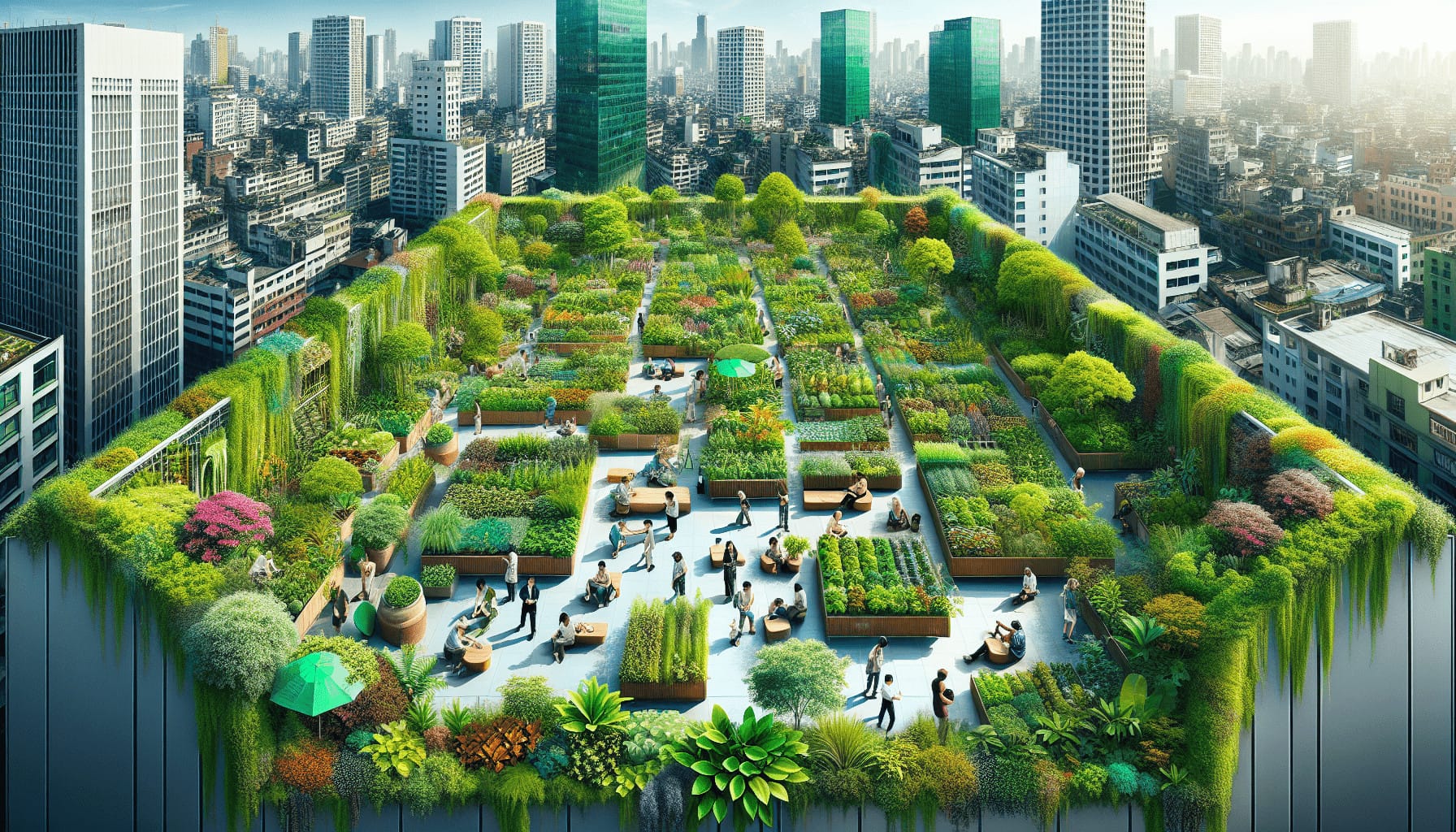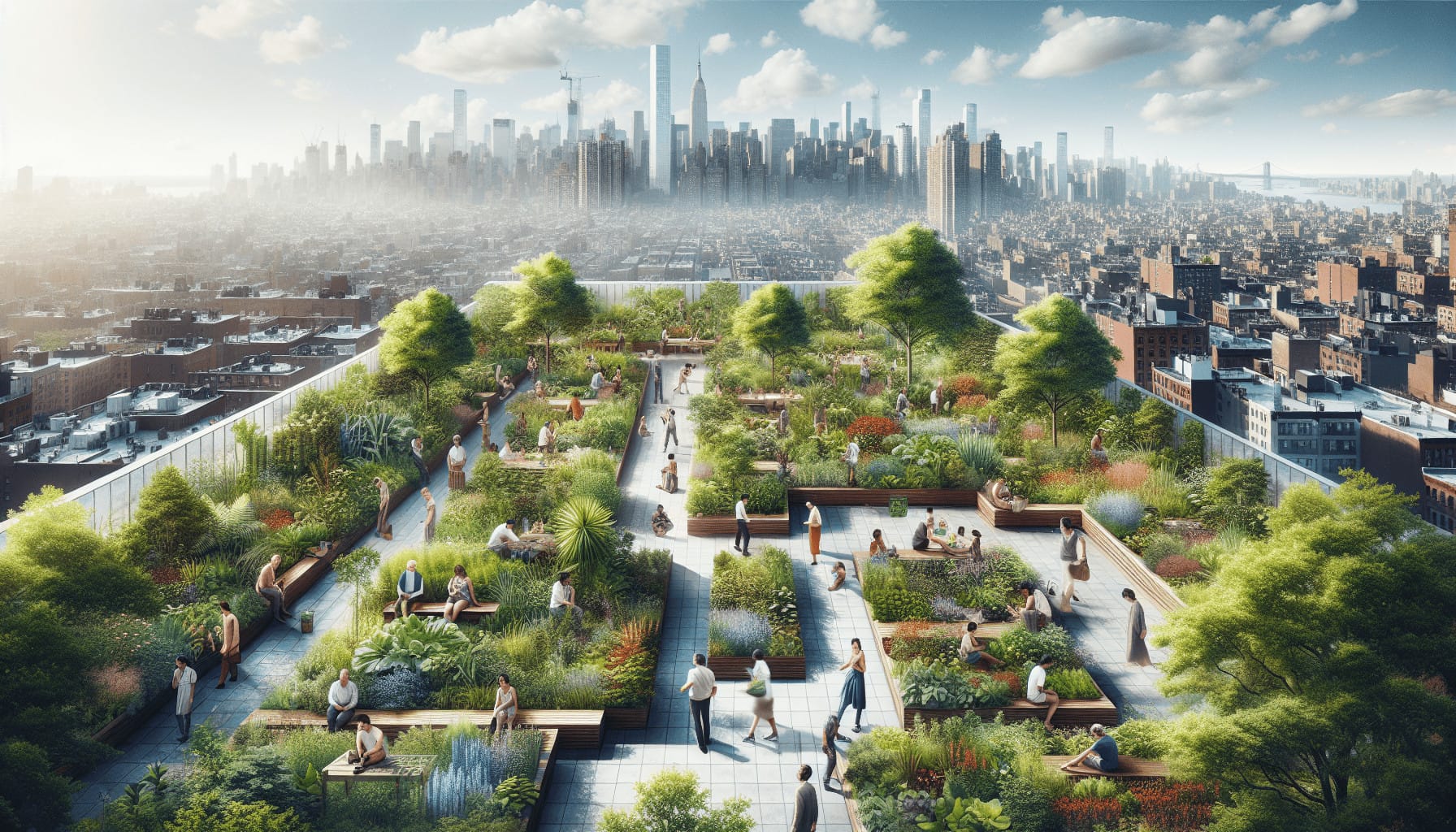Have you ever thought about how the spaces above our buildings, often overlooked and underutilized, could foster stronger community ties and environmental resilience? Green roof systems offer a fascinating and practical solution that intertwines urban life with nature. More than just a tool for managing stormwater or reducing urban heat, they serve as vibrant community spaces and educational platforms. Let’s embark on this journey together to explore the various ways green roof systems can play a vital role in enhancing community engagement.
What Are Green Roof Systems?
Before delving into their community benefits, it’s essential to understand what green roof systems are. A green roof is a layer of vegetation planted over a waterproofing system installed on top of a flat or slightly–sloped roof. They come in two main types: extensive and intensive. Extensive green roofs are lightweight and low-maintenance, featuring shallow soil and hardy plants suitable for most structures. Intensive green roofs resemble traditional gardens or parks with deeper soil and diverse plant life, requiring more maintenance and structural support.
Types of Green Roof Systems
To gain a better grasp, let’s compare these two systems:
| Feature | Extensive Green Roofs | Intensive Green Roofs |
|---|---|---|
| Soil Depth | Shallow (2–6 inches) | Deep (more than 6 inches) |
| Plant Variety | Limited to mosses, grasses, and sedum | Wide range including shrubs, trees |
| Weight | Lighter (15–50 pounds per square foot) | Heavier (up to 150 pounds per square foot) |
| Maintenance | Minimal due to hardy plants | Regular gardening and irrigation |
| Cost | Lower installation and maintenance costs | Higher due to complexity and materials |
These systems are much more than aesthetic features; they have the potential to transform urban spaces meaningfully and positively.
The Environmental Benefits of Green Roof Systems
The idea of engaging your community through green roofs becomes even more attractive when considering the environmental benefits that come along.
Heat Island Effect Mitigation
Urban areas often face increased temperatures due to the heat island effect, where buildings and paved surfaces trap heat. Green roofs help cool these areas by providing shaded surfaces and through the process of evapotranspiration, where plants release water into the atmosphere, cooling the air.
Improved Air Quality
Plants on green roofs naturally filter air pollutants and mitigate dust particles, which leads to cleaner and fresher air in urban communities. This not only benefits the environment but also improves public health, providing a healthier setting for community interaction.
Stormwater Management
Green roofs absorb rainwater, reducing runoff and alleviating pressure on drainage systems during heavy rains. This diminishes the likelihood of flooding and water pollution, contributing to a more sustainable and resilient urban infrastructure.

The Social Impact of Green Roof Systems
While the environmental advantages are significant, the social dimensions of green roofs contribute profoundly to community engagement.
Creating Community Spaces
Green roofs can be designed as recreational spaces, gathering points, or even community gardens. By utilizing rooftops, communities can create green oases in dense urban environments, providing residents with a shared space for relaxation and interaction.
Educational Opportunities
Green roofs present a rich opportunity for educational initiatives. Schools and community groups can use these spaces to learn about ecology, horticulture, and sustainability. Programs can be developed to engage adults and children alike in hands-on activities and workshops, fostering environmental awareness and stewardship.
Health and Well-being
Access to green spaces is linked to improved mental health and well-being. Green roofs provide a quiet retreat from the hustle and bustle of city life, offering a calming environment that encourages mindfulness and promotes relaxation. This aspect is crucial in fostering a grounded and connected community.
The Economic Aspects
You might wonder how green roofs affect urban economies. They are more than just an environmental or social investment; they offer economic benefits that can relieve municipal budgets and increase property values.
Energy Efficiency
Green roofs act as natural insulators, reducing the amount of energy required for heating and cooling buildings. This efficiency translates into lower energy bills for both residential and commercial properties.
Property Value Enhancement
Properties with green roofs often enjoy higher market values due to their sustainability features and aesthetic appeal. Such enhancements make buildings more desirable to buyers and tenants, contributing to more vibrant and economically robust neighborhoods.
Job Creation
The design, installation, and maintenance of green roof systems create job opportunities in landscaping, urban planning, and horticulture. These jobs support the local economy and boost community prosperity.

Facilitating Community Engagement Through Green Roofs
Now, let’s explore how you can harness the full potential of green roof systems to engage and strengthen your community.
Collaborative Design and Planning
Involving residents from the outset in the design and planning of green roofs fosters a sense of ownership and pride. Community workshops and consultations can tap into local knowledge and address the community’s unique needs, ensuring that the green roof serves its intended purpose effectively.
Hosting Community Events
Green roofs can become the venue for various community events such as workshops, cultural events, and social gatherings. These activities not only utilize the space creatively but also bring people together, enhancing social ties and community spirit.
Partnership with Local Organizations
Forming partnerships with local schools, environmental groups, and other community organizations can amplify the impact of green roofs. Through these partnerships, projects can access additional resources, expertise, and outreach opportunities, enhancing both participation and sustainability.
Challenges and Considerations
Implementing green roofs in a community setting does come with challenges that need addressing.
Structural and Technical Challenges
Ensuring a building’s structural integrity is paramount, as green roofs add extra weight. Assessments by structural engineers are necessary to determine a building’s suitability and any required modifications. Additionally, considerations around waterproofing and drainage systems must be carefully planned to prevent water damage and leakage.
Funding and Incentives
While green roofs present long-term savings and benefits, the upfront installation costs can be a barrier. Communities can seek grants, government incentives, or private sponsorship to alleviate these expenses. It is crucial to communicate the long-term economic, environmental, and social benefits to garner support and funding.
Case Studies: Green Roof Success Stories
Examining successful examples can provide insights and inspiration for what’s possible in your community.
Chicago City Hall Green Roof
One of the most notable green roofs is atop Chicago’s City Hall. It has become a model for urban sustainability, showcasing extensive and intensive green roof sections. Besides reducing the building’s energy use, it provides a habitat for pollinators and has become a case study for urban planners.
Brooklyn Grange Farms, New York
Brooklyn Grange operates the world’s largest rooftop soil farms, producing over 50,000 pounds of organic produce annually. It has become a cornerstone in the local food movement and a hub for community events, workshops, and educational tours.
Moving Towards a Greener Future
The potential of green roofs in promoting community engagement and sustainability is vast. They offer a practical and impactful way to address urban challenges while providing essential community spaces for interaction and education. As cities continue to grow and evolve, embracing innovative solutions like green roofs can lead to healthier, more connected, and more resilient communities.
By nurturing these green spaces, you invite not only nature back into urban settings but also the revitalization of community ties. So, how will you contribute to bringing these green innovations to the forefront of community development? Your involvement could be the next step toward a thriving, sustainable future for us all.
